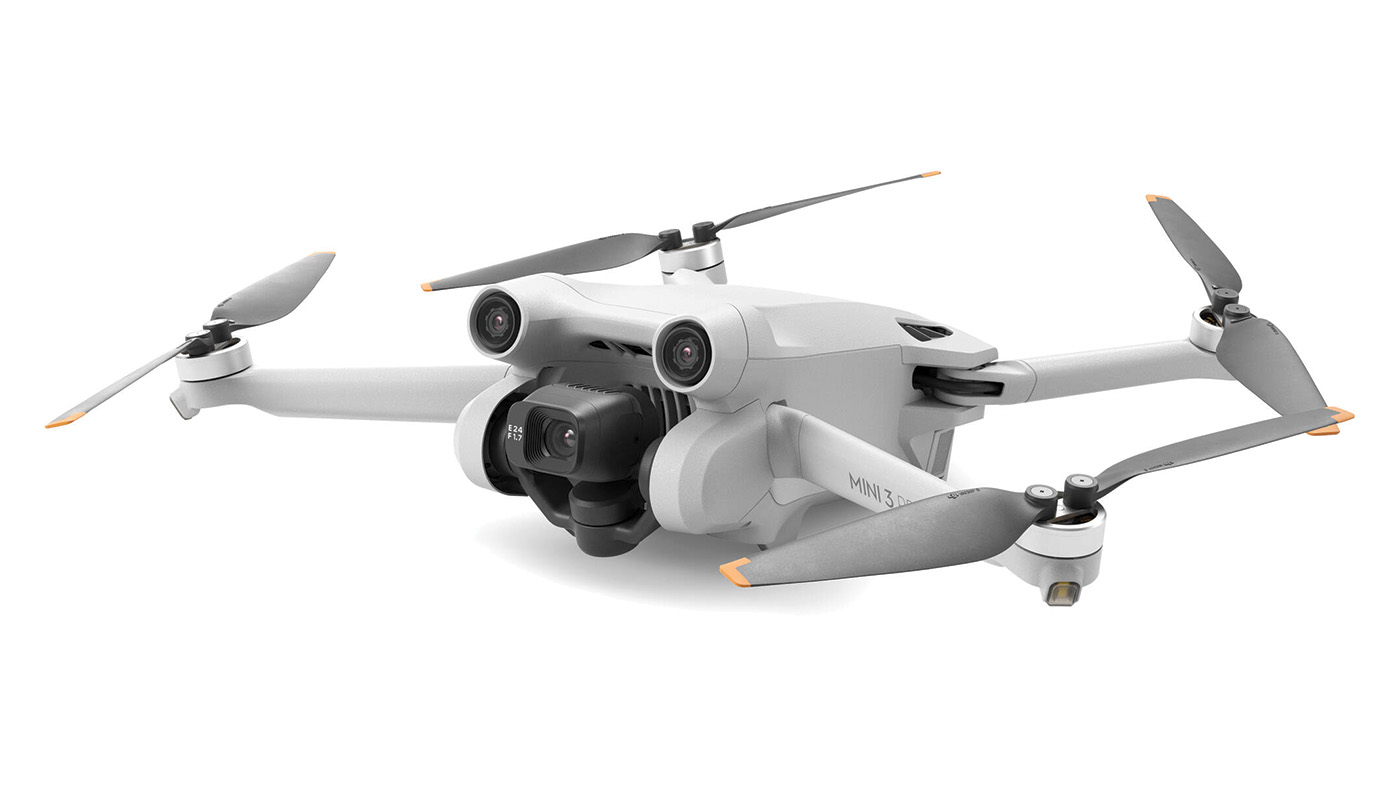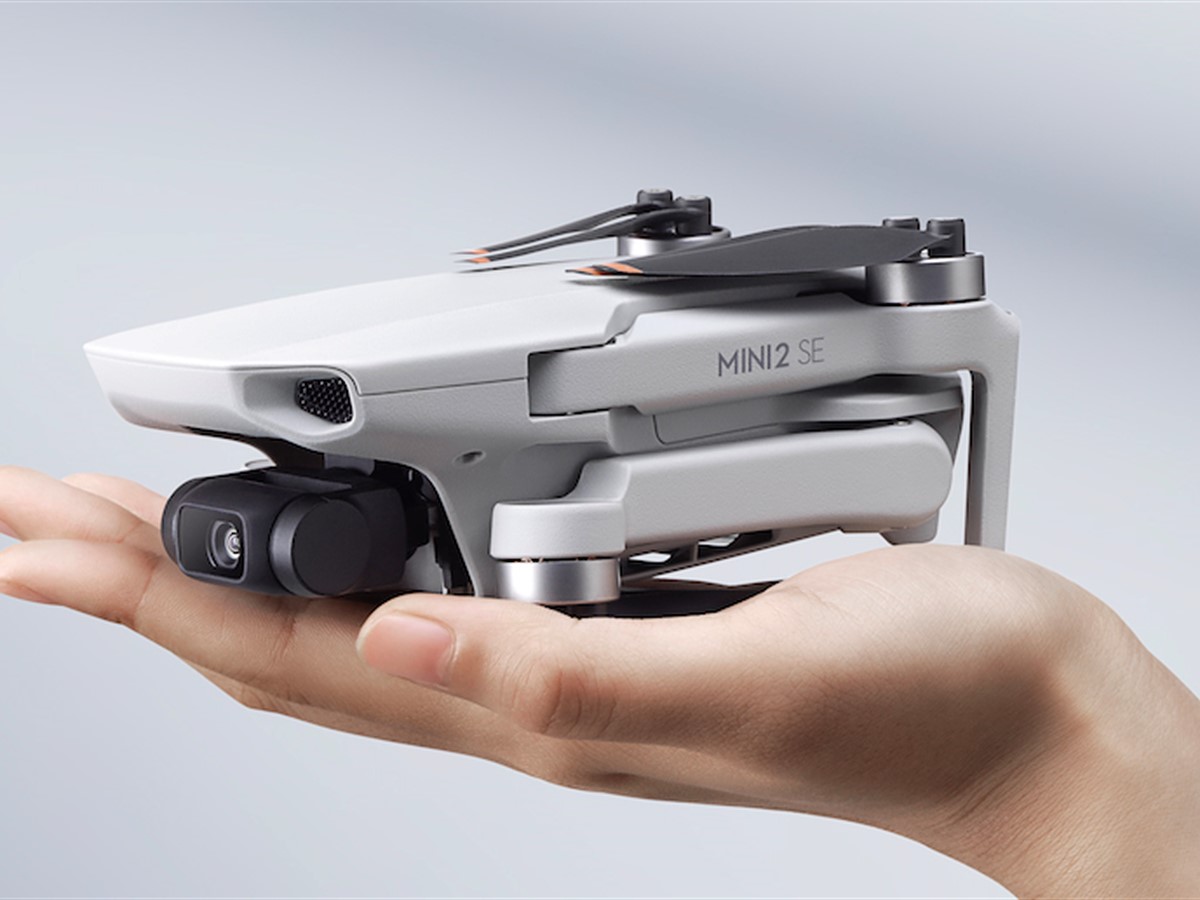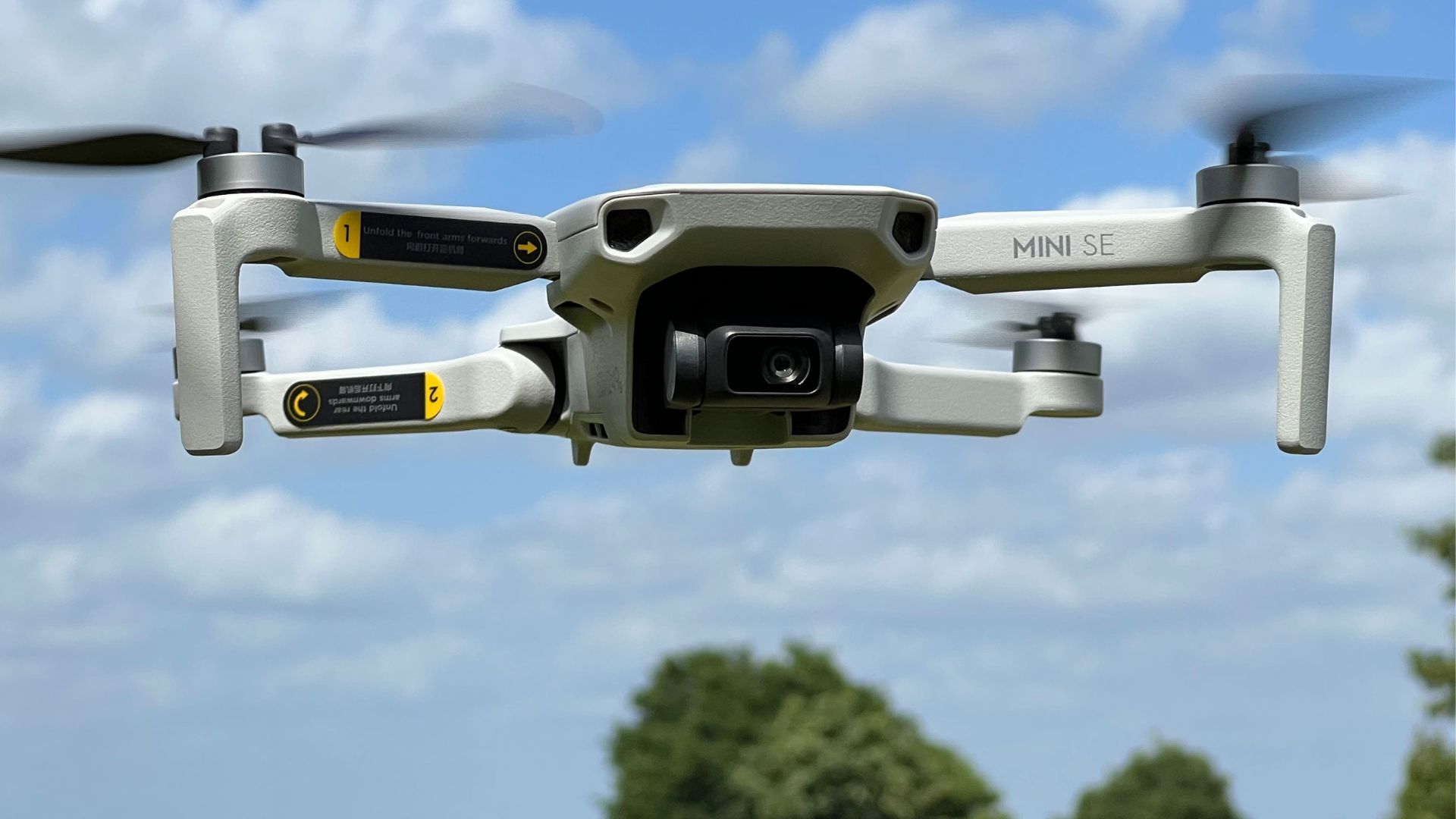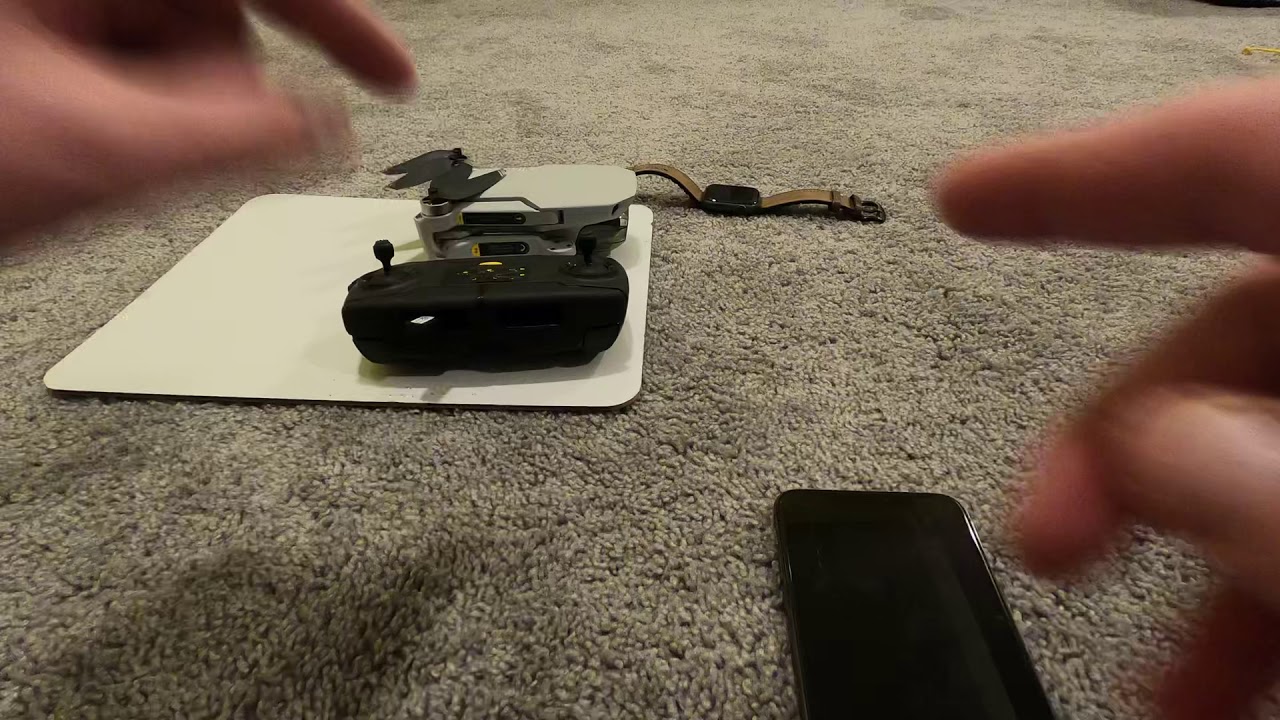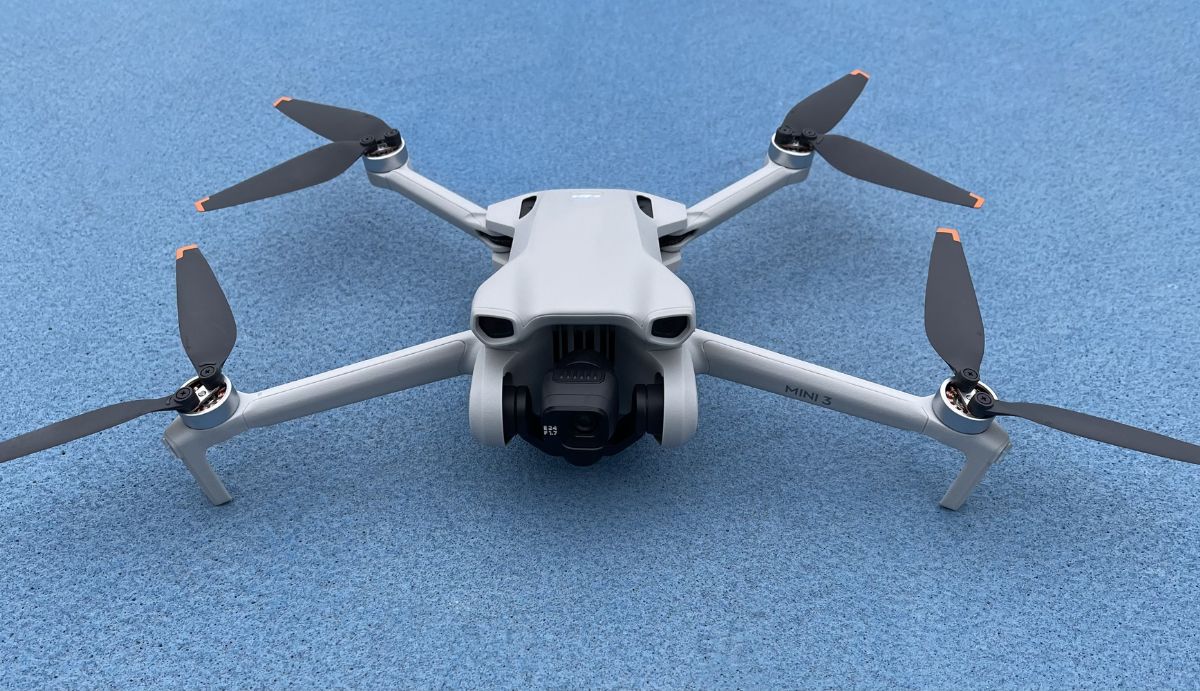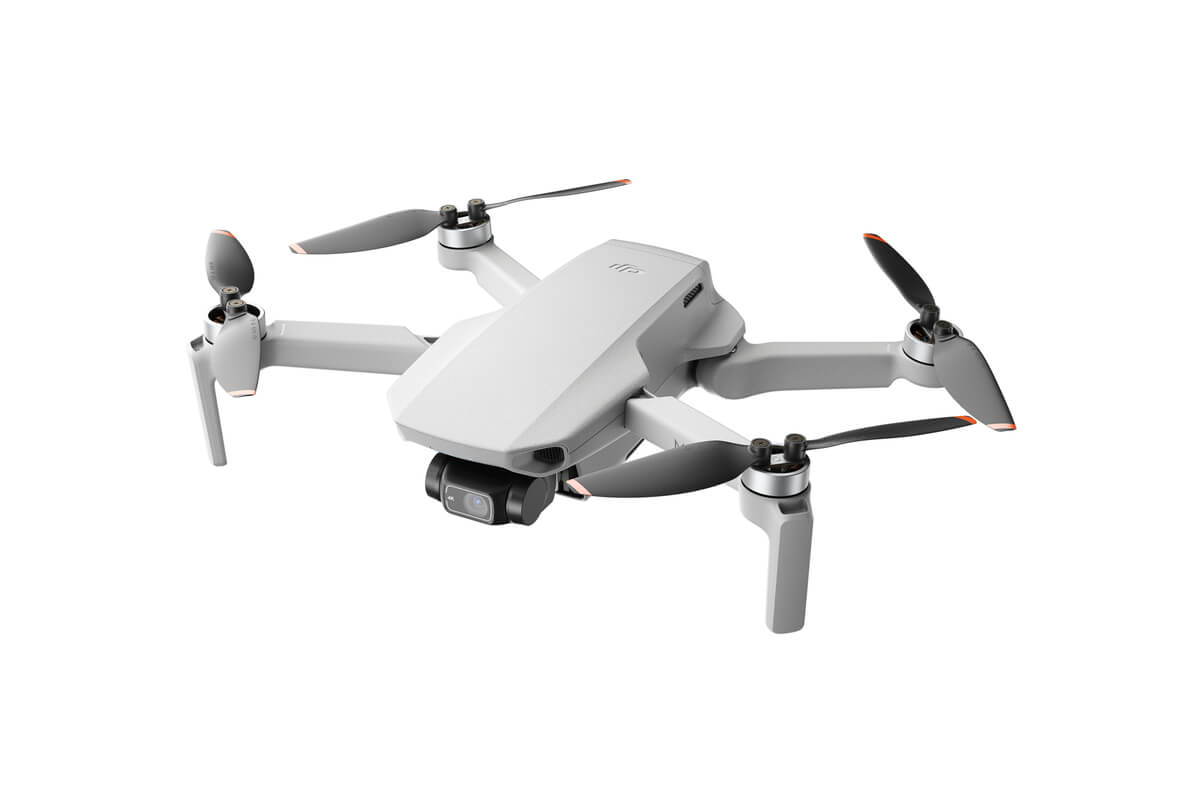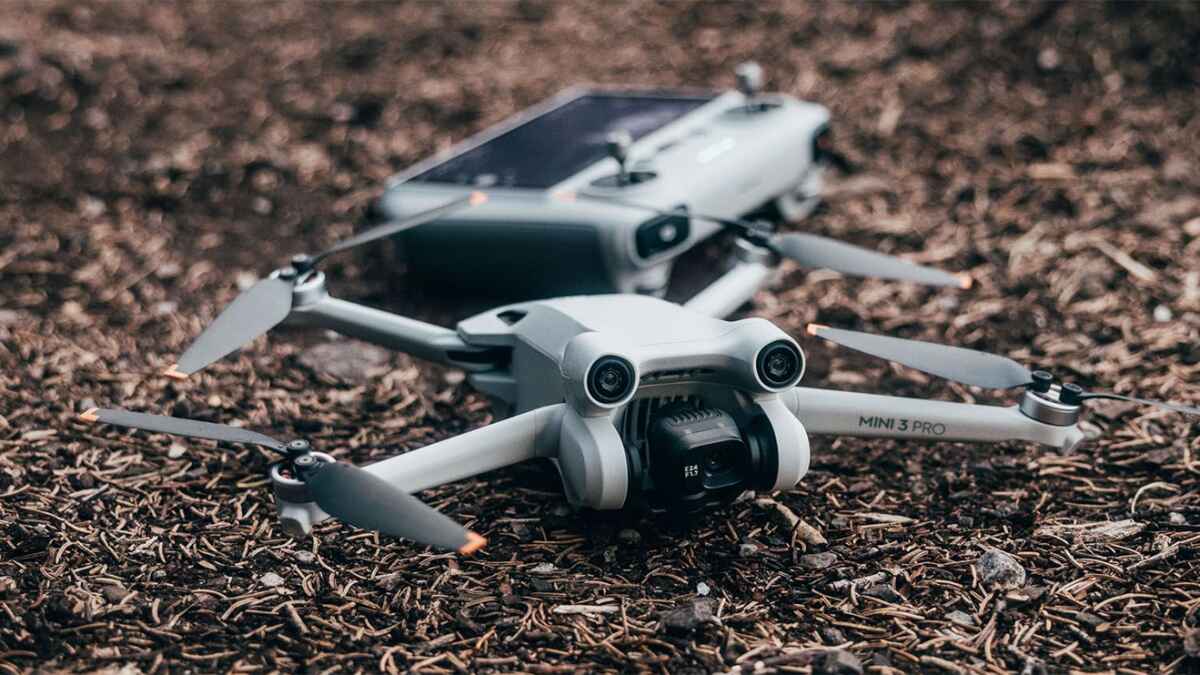Introduction
When it comes to capturing breathtaking aerial shots and exploring the world from new heights, the DJI Mini 3 is a popular choice among drone enthusiasts. Offering impressive features and a compact design, it’s no wonder why this drone has gained significant attention in the market. However, one important aspect that every drone pilot should consider before taking flight is the maximum range that the DJI Mini 3 can cover.
In this article, we will take a closer look at the flight range of the DJI Mini 3 and the various factors that can affect its performance. By understanding these factors, you’ll be able to make informed decisions and ensure that your drone flights are safe, efficient, and within legal boundaries.
Whether you’re a professional aerial photographer or an enthusiastic hobbyist, knowing the limitations and capabilities of your drone can greatly enhance your aerial experiences. So, let’s dive into the details and explore just how far the DJI Mini 3 can fly!
Understanding DJI Mini 3’s Flight Range
The flight range of the DJI Mini 3 refers to the maximum distance the drone can cover from its takeoff point before losing connectivity or requiring a return. It is an essential factor to consider before planning your drone missions and ensuring that you can capture the desired shots or explore the desired areas.
The DJI Mini 3 has an impressive maximum flight range of up to 10 kilometers (6.2 miles), offering ample opportunities for aerial exploration. This vast range allows you to cover large areas, capture stunning landscapes, and even venture into locations that would be otherwise difficult to access.
However, it’s important to note that the actual flight range you can achieve may vary depending on various factors, including environmental conditions, obstacles, and legal restrictions. Understanding these factors can help you make the most of the DJI Mini 3’s flight range and ensure a smooth flying experience.
Additionally, it’s worth mentioning that the flight range of the DJI Mini 3 can be influenced by different flight modes, signal strengths, battery life, and other factors that we will explore in the following sections. By understanding these factors and how they impact the range, you’ll be able to optimize your drone flights and make the most of the DJI Mini 3’s capabilities.
Factors Affecting DJI Mini 3’s Range
Several factors can affect the range of the DJI Mini 3 drone, and understanding these factors is crucial for maximizing your drone’s flight capabilities. Let’s explore the key factors that can impact the DJI Mini 3’s range:
1. GPS Signal Strength: The DJI Mini 3 relies on GPS technology to navigate and maintain its position. A strong GPS signal is essential for accurate positioning and long-distance flights. In areas with weak GPS signals, the drone may experience reduced range and potential connectivity issues.
2. Controller Signal Range: The range of the controller’s signal determines the maximum distance at which you can control the DJI Mini 3 drone. If the controller signal weakens, it can lead to decreased control range and potential loss of connectivity. Ensure that you have a clear line of sight between the controller and the drone for optimal signal strength.
3. Flight Mode: The DJI Mini 3 offers different flight modes, such as Normal Mode, Sport Mode, and GPS Mode. Each mode has its own characteristics and affects the drone’s range. Sport Mode, for example, allows for faster flight but may reduce the overall range compared to GPS Mode. Consider the flight mode you’re using and adjust accordingly to optimize the drone’s range.
4. Battery Life: The battery life of the DJI Mini 3 directly impacts its flight range. As the battery drains, the drone’s performance can be affected, potentially leading to shorter flights and reduced range. It’s essential to monitor your battery level and plan your flight accordingly, ensuring you have enough power to safely return to the takeoff point.
5. Environmental Conditions: Environmental factors such as wind speed, temperature, and altitude can affect the DJI Mini 3’s range. Strong winds can decrease the drone’s stability and increase power consumption, reducing the overall flight range. Similarly, high temperatures or extreme altitudes can impact the drone’s performance and flight capabilities. Consider these factors and adjust your flight plans accordingly.
6. Legal Restrictions: Lastly, it’s important to be aware of any legal restrictions or regulations that may limit the range of your DJI Mini 3 drone. Many countries have specific rules regarding drone flights, including maximum altitude limits and no-fly zones near airports, government buildings, or sensitive areas. Always research and adhere to the local regulations to ensure a safe and legal flight.
By considering these factors and taking the necessary precautions, you can optimize the range of your DJI Mini 3 drone and enjoy extended and successful flights.
GPS Signal Strength and Its Impact on Flight Range
The GPS signal strength plays a crucial role in determining the flight range of the DJI Mini 3 drone. GPS (Global Positioning System) technology allows the drone to accurately track its position and navigate through the airspace. A strong GPS signal ensures reliable positioning information, which is essential for safe and controlled flights.
When the DJI Mini 3 has a strong GPS signal, it can maintain its position with precision and fly at longer distances from the takeoff point. This means that you can explore larger areas and capture stunning shots from different perspectives. A strong GPS signal also aids in maintaining stable flight and reducing the chances of signal loss or connectivity issues.
On the other hand, if the GPS signal strength weakens, the drone’s flight range may be significantly affected. In areas with weak GPS signals, such as urban canyons or dense forests, the drone’s positioning accuracy may decrease. This can lead to reduced flight range and potential navigation errors.
It’s important to understand that the DJI Mini 3 relies on multiple satellites for its GPS connectivity. The more satellites it can connect to, the stronger the GPS signal. Therefore, being in open areas with clear skies can help improve the GPS signal strength and, subsequently, the drone’s flight range.
To ensure optimal GPS signal strength and maximize the flight range of your DJI Mini 3, consider the following tips:
- Operate the drone in areas with clear skies and minimal obstructions, such as tall buildings or dense vegetation.
- Avoid flying in areas with electromagnetic interference, as it can disrupt the GPS signal.
- Wait for a stable GPS connection before taking off. The DJI Mini 3 will indicate when it has acquired a strong GPS signal.
- Regularly update the drone’s firmware and software to ensure optimal GPS performance.
- Calibrate the drone’s compass before each flight to enhance GPS accuracy.
By paying attention to the GPS signal strength and following these tips, you can maximize the flight range of your DJI Mini 3 drone and have a more enjoyable and successful aerial experience.
Controller Signal Range and its Effect on DJI Mini 3’s Flight Range
The controller signal range is another critical factor that affects the flight range of the DJI Mini 3 drone. The controller serves as the primary means of communication between the pilot and the drone, allowing for precise control and navigation. The signal strength between the controller and the drone directly impacts the maximum distance at which you can fly the DJI Mini 3.
Most DJI Mini 3 models have a controller signal range of up to 10 kilometers (6.2 miles), giving pilots ample freedom to explore vast areas from a remote location. However, it’s important to note that various factors can affect the controller’s signal range and subsequently limit the drone’s flight range.
One crucial consideration is maintaining a clear line of sight between the controller and the drone. Obstacles such as buildings, trees, or even the terrain can block or weaken the controller’s signal, leading to reduced signal range and potential loss of connectivity. As a result, it is always recommended to fly in open areas where obstacles are minimal, ensuring an uninterrupted signal between the controller and the drone.
Additionally, environmental factors like electromagnetic interference can also impact the controller’s signal range. Flying near power lines or areas with high levels of radio frequency interference can disrupt the signal and limit the drone’s flight range.
To optimize the controller signal range and extend the flight range of your DJI Mini 3, consider the following tips:
- Fly in areas with minimal obstructions and clear line of sight between the controller and the drone.
- Avoid flying near sources of electromagnetic interference, such as power lines or radio towers.
- Ensure that both the controller and the drone’s antennas are undamaged and properly positioned for optimal signal transmission.
- Keep the controller’s batteries sufficiently charged to maintain a strong and stable signal throughout the flight.
- Keep the controller firmware updated to ensure optimal performance and signal range.
By following these tips and taking necessary precautions, you can maximize the controller signal range and in turn, extend the flight range of your DJI Mini 3 drone. This will allow for more exciting aerial adventures and the capture of stunning footage from greater distances.
Flight Mode and Its Influence on DJI Mini 3’s Range
The DJI Mini 3 offers different flight modes to cater to various scenarios and pilot preferences. These flight modes can have a significant influence on the range and overall performance of the drone. Understanding how each mode affects the DJI Mini 3’s range is essential for optimizing your flights.
1. Normal Mode: In Normal Mode, the DJI Mini 3 operates with balanced flight characteristics. It provides stable and controlled flights, making it ideal for capturing smooth footage or performing precise maneuvers. While Normal Mode may not offer the highest speed, it allows for extended flight range as the drone conserves energy by flying at a moderate pace.
2. Sport Mode: Sport Mode, as the name suggests, is designed for those seeking a more exhilarating flight experience. In Sport Mode, the DJI Mini 3 unlocks its full speed potential, allowing for swift and agile flights. However, it’s important to note that Sport Mode consumes more power, which can lead to a shorter flight range compared to Normal Mode.
3. GPS Mode: GPS Mode is recommended for most general flights. In this mode, the DJI Mini 3 utilizes both GPS and GLONASS satellite systems for precise positioning and navigation. GPS signals provide accurate location information, allowing the drone to maintain stable flight and optimize its range. GPS Mode offers a good balance between flight performance and range, making it suitable for various scenarios.
By selecting the appropriate flight mode for your specific needs, you can maximize the DJI Mini 3’s range while ensuring a safe and enjoyable flight. It’s worth noting that the specific flight range achievable in each mode may vary depending on factors such as wind conditions and battery life.
Whether you prefer the controlled movements of Normal Mode, the thrilling speed of Sport Mode, or the stability of GPS Mode, understanding how each flight mode influences range will help you plan and execute successful drone flights.
Remember to familiarize yourself with each mode’s features and limitations to make informed decisions regarding flight mode selection and optimize the flight performance and range of your DJI Mini 3 drone.
Battery Life and Its Role in DJI Mini 3’s Maximum Flight Distance
The battery life of the DJI Mini 3 is a crucial factor that directly impacts the drone’s maximum flight distance. As the drone operates solely on battery power, understanding the battery’s capacity and optimizing its usage is essential for extending the flight range of the DJI Mini 3.
The DJI Mini 3 is equipped with a high-performance lithium polymer (LiPo) battery that provides sufficient power for extended flights. However, it’s important to note that the battery life is limited, and as the battery drains, the drone’s performance may be compromised, resulting in a reduced flight range.
The actual flight time you can achieve with a fully charged battery will depend on various factors, including flight conditions, flight mode, payload, and environmental conditions. Generally, the DJI Mini 3 offers a flight time of up to 31 minutes on average, but this can be significantly reduced if the drone operates in demanding conditions or performs high-speed maneuvers.
To make the most of the battery life and maximize the flight range of your DJI Mini 3, consider the following tips:
- Ensure that the battery is fully charged before each flight. A fully charged battery will provide the optimal power output and flight performance.
- Avoid flying in extremely cold temperatures, as cold weather can decrease the battery’s efficiency and capacity.
- Optimize your flight route and minimize unnecessary maneuvers to conserve battery power.
- Consider reducing the payload if possible. Heavier payloads can increase power consumption and reduce flight time.
- Monitor the battery level during the flight and plan your flight path accordingly to ensure a safe return to the takeoff point without draining the battery completely.
It’s important to note that flying with low battery levels can increase the risk of an emergency landing or loss of control. Always prioritize safety and return to the takeoff point when the battery level is low, even if it means sacrificing some flight time.
By understanding the battery life and implementing these tips, you can ensure a longer flight range for your DJI Mini 3 and make the most of your aerial photography or videography sessions.
Legal Restrictions and Regulations Limiting DJI Mini 3’s Range
When operating the DJI Mini 3 drone, it is crucial to be aware of the legal restrictions and regulations that may limit its flight range. Governments and aviation authorities have implemented specific rules and regulations to ensure the safe operation of drones and protect public privacy and safety.
These restrictions can vary depending on the country or region you’re flying in, but some common regulations that may limit the flight range of the DJI Mini 3 include:
1. No-fly zones: Many countries have designated no-fly zones, which are areas where drone flights are strictly prohibited. These areas typically include airports, government buildings, military installations, and other sensitive locations. Pilots must respect these no-fly zones and avoid them to ensure compliance with the law.
2. Altitude restrictions: Aviation authorities often set altitude limits for drone operations. These limits can vary depending on the country and the specific area you’re flying in. For example, in the United States, drones are limited to a maximum altitude of 400 feet (about 120 meters) above ground level. Pilots must adhere to these altitude restrictions to avoid interfering with manned aircraft and ensure safe airspace utilization.
3. Registration requirements: In some countries, drone pilots are required to register their drones with the aviation authorities before operating them. Failure to register a drone or comply with registration requirements can result in penalties or fines. It is essential to familiarize yourself with the registration process and fulfill all necessary obligations before taking off with your DJI Mini 3.
4. Privacy and data protection: Drones equipped with cameras, like the DJI Mini 3, raise concerns regarding privacy and data protection. Many countries have regulations in place to protect the privacy of individuals, prohibiting the use of drones for surveillance or capturing footage without explicit consent. It’s crucial to understand and respect the privacy laws in your area when operating your DJI Mini 3, ensuring the responsible and ethical use of the drone’s capabilities.
5. Local or temporary restrictions: Sometimes, local or temporary restrictions may be imposed due to specific events, airspace closures, or security concerns. These restrictions can limit the flight range or even prohibit drone operations in certain areas during specific time frames. It’s important to stay updated with any local or temporary restrictions by checking official aviation authority websites or using dedicated drone flight apps.
Before flying your DJI Mini 3, it is crucial to research and understand the drone laws and regulations in your jurisdiction. Familiarize yourself with the specific restrictions that may impact the flight range and plan your flights accordingly to ensure compliance and avoid any legal consequences.
By flying responsibly and within the legal boundaries, you can enjoy the capabilities of your DJI Mini 3 while respecting the rules and ensuring the safety of yourself, others, and the airspace.
Tips to Maximize DJI Mini 3’s Flight Range
To make the most of your DJI Mini 3’s flight range and extend your aerial adventures, consider implementing the following tips:
1. Plan your flight: Before taking off, plan your flight route and consider any potential obstacles or limitations that may affect your drone’s range. By having a clear plan, you can optimize your flight path and maximize your drone’s coverage area.
2. Fly in open areas: Choose open areas with minimal obstructions to ensure a clear line of sight between the drone and the controller. Open spaces will provide better signal strength and range for your DJI Mini 3.
3. Avoid flying in adverse weather conditions: Strong winds, rain, or extreme temperatures can negatively impact your drone’s performance and reduce its range. It’s best to fly in calm weather conditions to maximize both safety and flight range.
4. Keep your drone and controller firmware updated: Regularly check for firmware updates from DJI to ensure your drone is operating with the latest enhancements and optimizations. Firmware updates can improve flight performance and help extend your DJI Mini 3’s flight range.
5. Monitor battery levels: Keep a close eye on your drone’s battery levels during flight. Make sure to return to the takeoff point with enough remaining power to land safely. Avoid draining the battery completely, as it may result in an emergency landing or loss of control.
6. Optimize flight settings: Adjust your drone’s flight settings to match the conditions and requirements of your flight. For longer-range flights, consider using GPS Mode and maintaining a reasonable speed to conserve battery power.
7. Minimize payload: Lighten the drone’s payload whenever possible, as heavier payloads can decrease flight performance and range. Consider removing unnecessary accessories or cameras that may add weight to your DJI Mini 3.
8. Perform pre-flight inspections: Before every flight, conduct a thorough pre-flight inspection of your DJI Mini 3. Check for any signs of damage or loose parts that might affect its flight capabilities. Ensure that your propellers are securely fastened.
9. Learn to fly efficiently: Practice smooth and controlled movements to minimize unnecessary maneuvers. Sudden or aggressive movements can drain the battery faster and reduce flight range. Fly purposefully and with intention to maximize your Mini 3’s range.
10. Stay aware of signal strength: Keep an eye on the signal strength between your controller and the drone. If you notice a weakening signal, adjust your flight path to ensure a stable connection and maintain control of your DJI Mini 3.
By following these tips, you can optimize your DJI Mini 3’s flight range and enjoy extended flight times, allowing you to capture stunning aerial footage and explore new horizons.
Conclusion
The DJI Mini 3 is an impressive drone with a considerable flight range, allowing pilots to explore new heights and capture breathtaking aerial footage. However, maximizing the drone’s flight range requires an understanding of the various factors at play.
Factors such as GPS signal strength, controller signal range, flight mode, battery life, and legal restrictions all have a significant impact on the DJI Mini 3’s flight range. By considering these factors and implementing the recommended tips, you can optimize your drone’s range and ensure safe and enjoyable flights.
Understanding the GPS signal strength and maintaining a clear line of sight between the controller and the drone are crucial for maximizing flight range. Additionally, selecting the appropriate flight mode based on your needs and optimizing battery usage will help extend your DJI Mini 3’s flight time.
Moreover, it’s essential to adhere to legal restrictions and regulations governing drone operations in your area. By obeying no-fly zones, respecting altitude limits, and registering your drone if required, you can avoid legal issues and promote responsible drone use.
Ultimately, with careful planning, efficient flying techniques, and awareness of the drone’s capabilities and limitations, you can make the most of the DJI Mini 3’s flight range and unlock its full potential.
So, take to the skies with your DJI Mini 3, explore new horizons, and capture stunning footage that will leave you and your audience in awe. Safe and happy flying!







